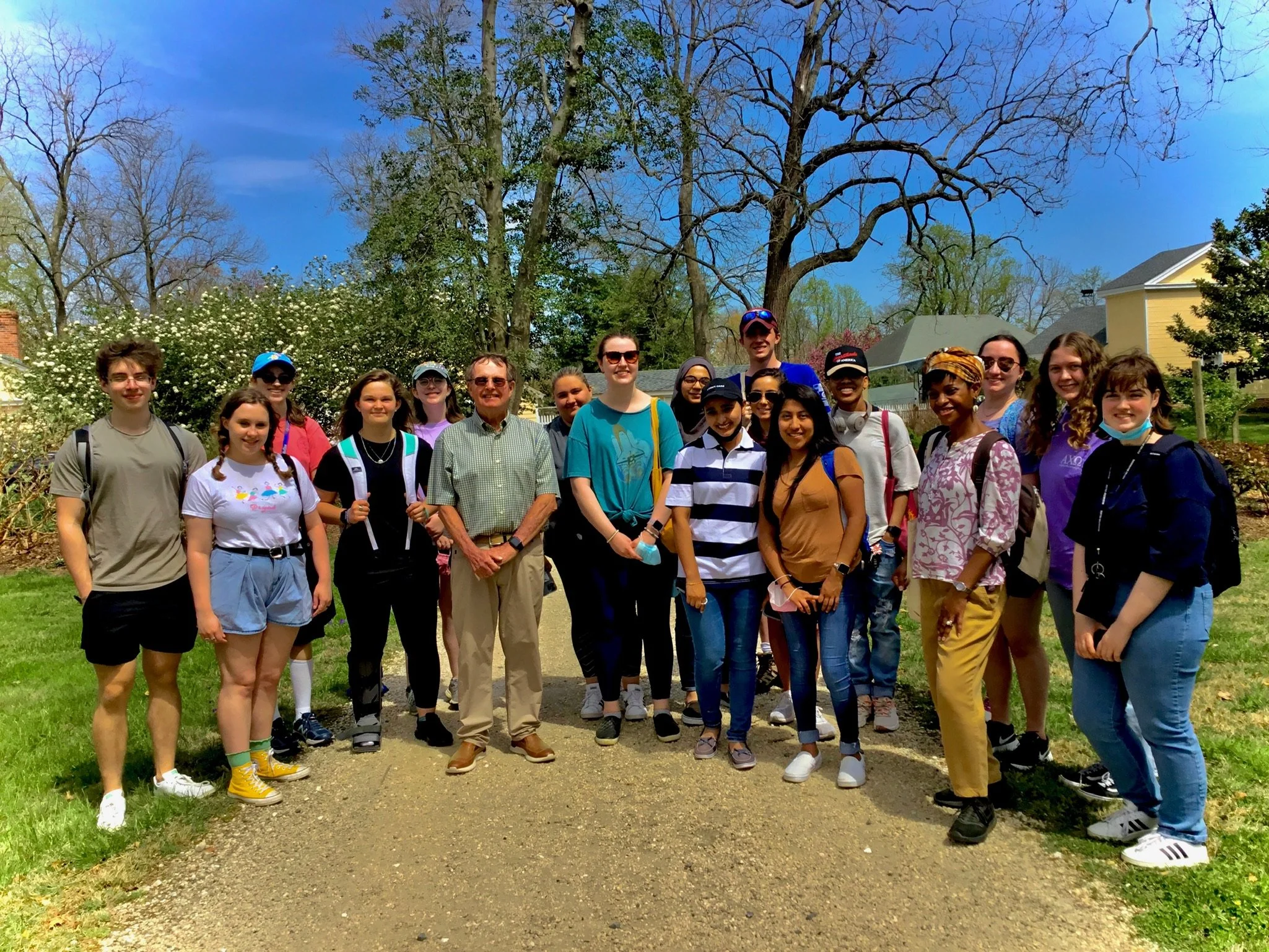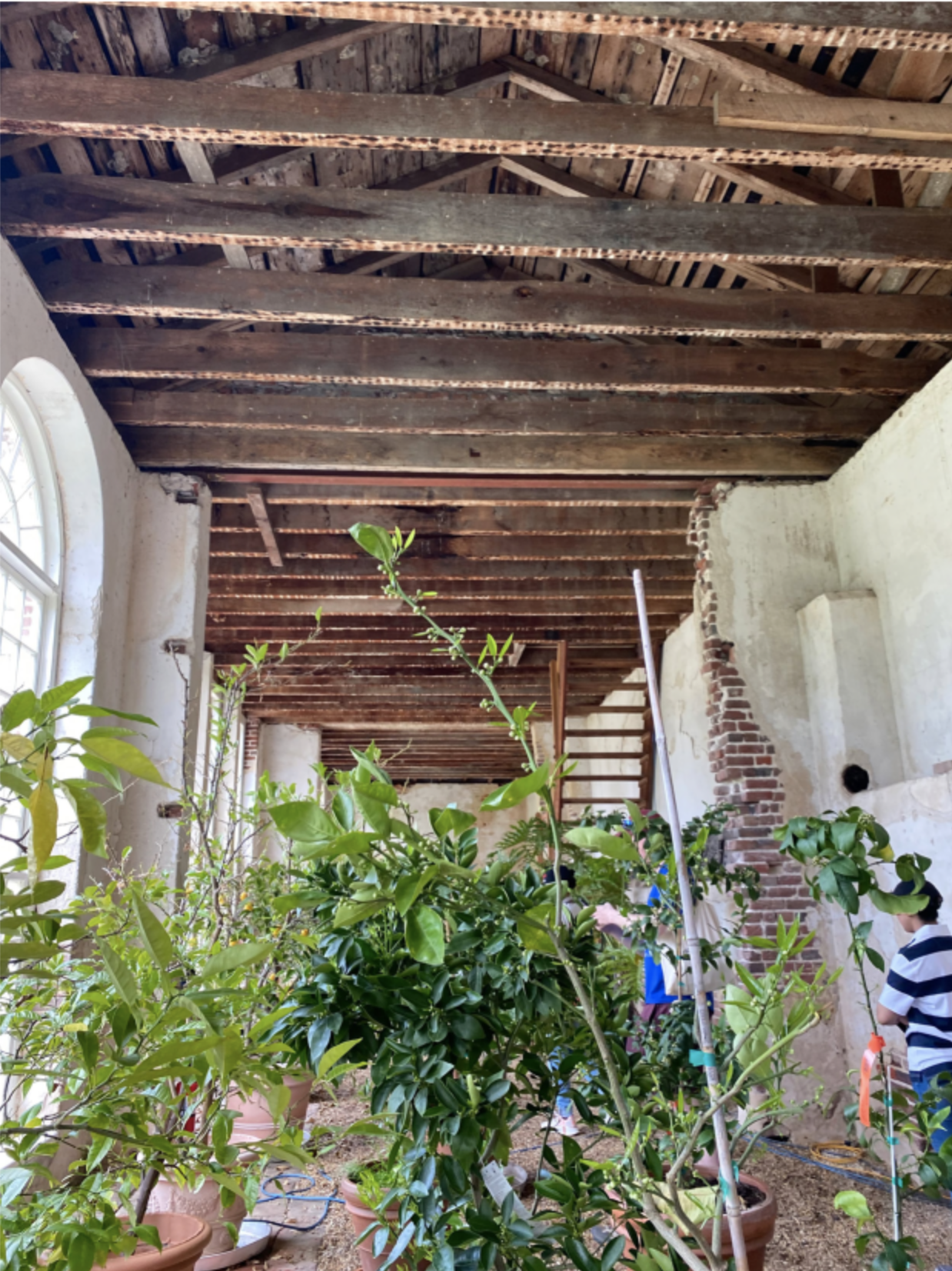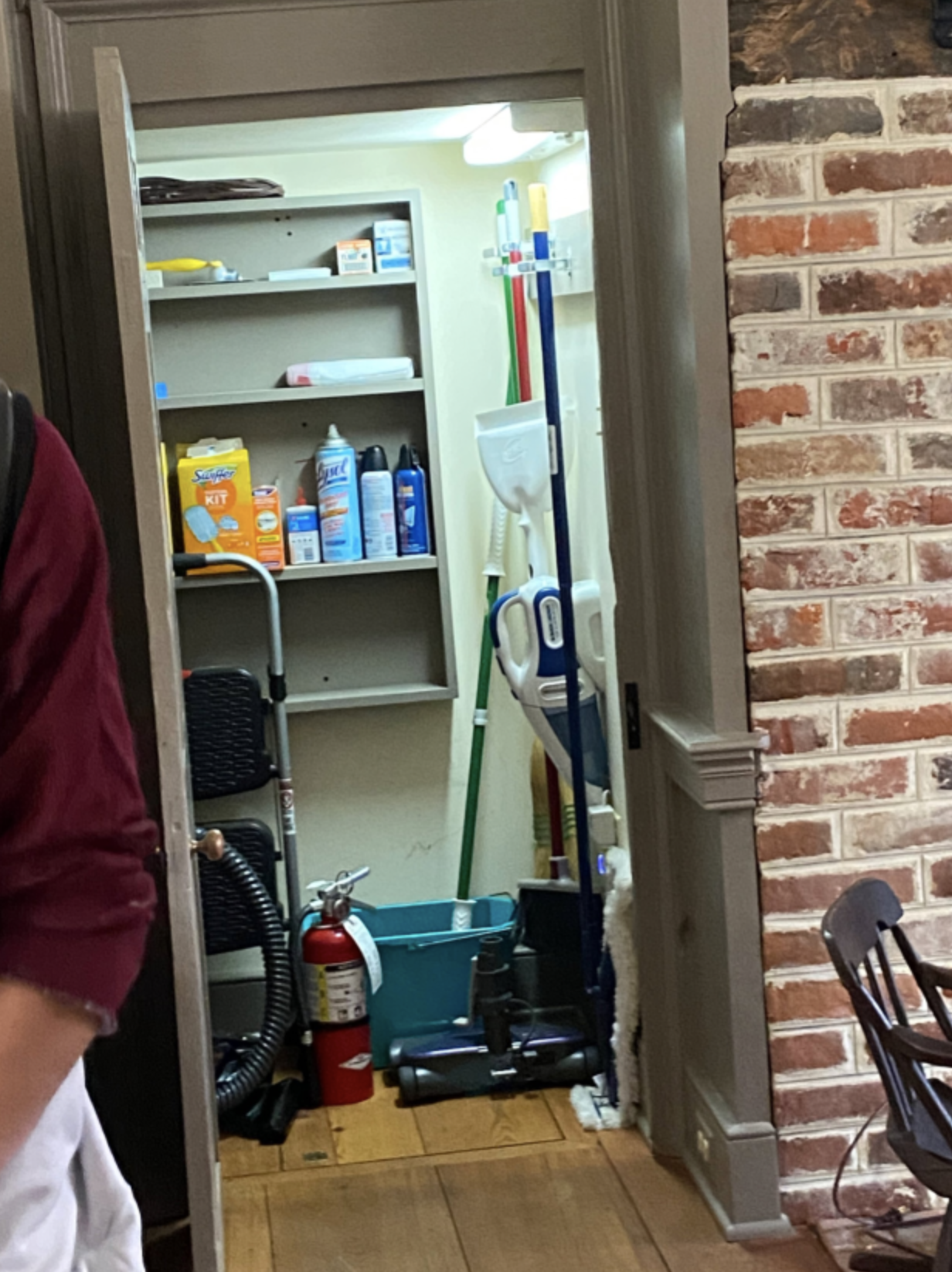Washington College Students Come Face-to-Face with Frederick Douglass’s Wye House History
by Prof. Sufiya Abdur-Rahman and her Introduction to Nonfiction students
As Frederick Douglass wrote in his 1845 classic, Narrative of the Life of Frederick Douglass, he was born about twelve miles from Easton, in Talbot County, Md. In fact, he spent some of his most formative years enslaved there, on Wye House Plantation, in Easton. When I realized how close this site of Douglass’s childhood was, while driving back and forth to my job teaching English at Washington College and passing the Wye exits, I knew I had to visit. And even more important than seeing the location that gave rise to one of this nation’s greatest abolitionists for myself, I knew I had to take my students.
I got that opportunity in April 2022. My Introduction to Nonfiction students, who had spent the semester studying the writing of Douglass—including his Narrative that is partially set at Wye House—boarded a charter bus to Easton. They toured the same property where Douglass once watched, heard, and felt the chilling scenes of slavery as a young boy. Wye House—privately owned by descendants of Col. Edward Lloyd, one of the masters that Douglass wrote about in his Narrative—is not accessible to all. My students wrote about the unique opportunity that they got to both read about and experience a particular aspect of Douglass’s life and America’s history. Here are just a few selections from their work:
Abdur-Rahman (fourth from right) and her students pose with the owner of Wye House, Richard Tilghman (sixth from left). Photo by Samaadi Scott.
Witnessing Wye House
by Emily Arnold
Getting off the bus, there was a smell of pureness. A smell that was uncontaminated by industrial buildings, schools, commercial buildings, or companies. Instead, I could smell the mulch and trees that surrounded my classmates and me from all around. I could hear the birds chirping and the water hitting the dock. I could feel the sun radiating off my skin and I could see the buildings that Frederick Douglass walked through and by when he was enslaved on this plantation. My class’s recent visit to Wye House was both informative and intriguing for multiple reasons.
While the plantation has changed, in regard to buildings that are new or are no longer there, it has also remained the same. It is still the same big house (Figure 1), the same orangery (Figure 2), and the same closet where Douglass slept (Figure 3). Listening to Richard Tilghman tell the class small details was enlightening because those details were not in the Narrative. He mentioned the orangery where “the floor was typically covered in water because there was no drainage system in place” and that “a pathway was built for the ladies so their shoes and dresses wouldn’t get muddy,” but it was also saddening. Walking around the plantation and knowing that the exact spot where I was standing was a spot where an African American had their basic rights taken away was heart-wrenching. If there were a low-hanging tree branch, I couldn’t help but wonder if an innocent was vigorously whipped against their will there, and it sickened me.
Figure 4. Small room behind the orangery where an enslaved family lived. Photo by Emily Arnold
Observing the small room behind (Figure 4) the orangery where a family lived and slept on wooden boards so they could take care of the plants growing while a large, heated furnace was blazing just a few yards away was horrifying. Being on the same plantation that Douglass and countless others were enslaved evoked a sorrowful, but insightful, experience. It allowed details from the Narrative to come to life more by giving me the chance to witness where everything took place. Being present on the plantation in this time is inconsequential compared to when Douglass was. The disgust I felt being on the plantation (even though it was interesting) was probably nothing compared to what Douglass felt; this visit put into perspective what it felt like during Douglass’s time the best it could.
Overall, the visit helped guide me to a better understanding of Douglass’s Narrative. It provided me with the opportunity to walk the grounds and grasp a strong idea of how reality can be written to portray specific experiences that people lived through. The past can be taken and written so that generations to follow can relive and learn from what someone else once did, such as Frederick Douglass.
The Reality of History
by Lucy Verlaque
The first thing I noticed when my class arrived at Wye House was how isolated it was; the vast fields and endless array of trees were the only objects in sight, obscuring any sense of direction towards civilization. The bus ambled down a thin dirt road, which as far as I could tell was the only road in sight. When the bus parked and we stepped out, we were met by Richard Tilghman, a direct descendent of the Colonel Lloyd described in Narrative of the Life of Frederick Douglass. The class walked behind him as he introduced himself and his home, and the amount of history being thrown before me was almost incomprehensible.
As we followed Tilghman down the path, I couldn’t help but think how pretty the natural scenery was. There was a creek in the distance, and paired with the soft green hills and warm April weather, it made for a peaceful atmosphere. It was difficult to imagine that so much suffering had occurred here less than two hundred years ago; though the truth of this reality lingered in the back of my mind, it was hard to focus on when the nature surrounding us was so serene.
We stood on the gravel and listened to Tilghman describe some aspects of the surrounding landscape. He gestured to the open grass beside us, barren except for a spattering of skeletal trees, still recovering from winter. He explained that this area was estimated to be the burial site of countless enslaved people. The air turned thick where I stood; the natural scenery that had looked so serene a moment ago now sent a chill down my spine. The terrible images that had haunted the back of my mind were launched to the forefront, and now all I could see around me was tainted with the reality of what had happened here.
Headstones in the Lloyd Family cemetery. Photo by Lucy Verlaque
After seeing some other parts of the plantation, we were brought to the family graveyard. Trees and flowers surrounded the site, blooming in spring pinks and greens. The faded headstones were lined in the center, engraved with the names of generations of Lloyds. It was positioned next to a deteriorating brick house, which had apparently been a place where enslaved people slept; this arrangement made me uneasy, further illuminating my mind’s images of the history of this plantation.
I turned my head to look back at the open grass field where the enslaved were buried. It was an eerie sight compared to the family graveyard. Tilghman could visit his family members’ graves and pay his respects to his heritage whenever he pleased; the families of the enslaved people buried just a few steps away would never be able to afford that luxury.
The copse of trees in the distance mark the boundary where enslaved people are buried. Photo by Lucy Verlaque
Visiting Wye House provided a physical representation of the oppression we had been reading about. When reading about Douglass’s life in class, it was easy to misconstrue his story as fiction rather than fact; seeing the very place where so much of his trauma occurred in real life solidified the reality of his Narrative.
To Be Home: Wye House
by Hannah Flayhart
Behind the grand house is an orangery. From the front of the building, you can see large Palladian style windows, providing copious light for the oranges and lemons growing inside. The pots housing the citruses are placed seemingly haphazardly around the open floor. The second floor, that was once a billiards room, is inaccessible; the stairway missing and the floorboard rotted through. Even past its moments of glory, the orangery is beautiful, romantic, and almost feels mystic—like you could expect a fantastical being to pop around the corner. It was once a place used to show off the wealth of the plantation owners with large stadium-like seating for the plants to tower over their visitors, said the owner, Richard Tilghman. Now the space seems to be much more of a greenhouse, to show people who are interested, but not a main stopping area.
Greenhouse at Wye House. Photo by Hannah Flayhart
The back of the greenhouse holds a quarters for the enslaved. Photo by Hannah Flayhart
On the other side of this building is a section that used to be slave quarters. The ceiling here is low, the windows are small, and the cold from the dirt floor is leaching up through my shoes. Tilghman told my classmates and me that the enslaved people would have slept on the second floor, which could be viewed due to the large section of missing floor. A large stove was covered with items, not historical artifacts, but rather items that have been placed here for simple storage. A fear of sleeping somewhere near open fire must have been abandoned for necessity. The room is dusty, dark, and cramped. It is obvious that this space is used and visited even less than the orangery on the other side.
Seeing the stark difference between the space that enslaved people lived in and the space that the white owners took up for pleasure highlighted for me the moments that Douglass talks about in his Narrative. I think it is one thing to read about how enslaved people were treated worse than animals, but another thing to step into that space and see that they were actually treated worse than oranges and lemons, too. After reading the Narrative and feeling the sorrow of Douglass’s and many others’ lives under slavery, entering a space where we knew that slavery was actively happening and being able to experience the physical differences was harrowing.
It is interesting how these spaces are so different, but would have been deeply connected due to the people working there. The archeologists Mark P. Leone, James M. Harmon, and Jessica L. Neuwirthnoted that the style of the gardens were “favored by the Chesapeake Tidewater elite [and were] ‘consonant with the slaveholder ideology’ by promoting and controlling ‘the hierarchy of movement throughout the gardens’”. The gardens were made to make it confusing and wonderful as a visitor or worker walked through them. A lot of credit is given to the gardener and Edward Lloyd III for their work, but also, credit is due to the enslaved gardeners who worked on the gardens and in the orangery. Knowing the amount of work that enslaved people put into a space they weren’t allowed to enjoy really highlights the awful feeling that comes from being in those spaces where they worked versus the spaces where they lived.
Even in Death
by Grace Hogsten
Our class trip to Wye House gave me an even greater appreciation for the writings of Frederick Douglass. I saw the places where so many enslaved people lived and died, with no freedom or recognition, and little source of identity, with my own eyes. I saw the places where Douglass identified the injustices and abuses of slavery and began to become the person who would advocate for abolition and speak for the enslaved.
Cultivated oranges in the orangery. Photo by Grace Hogsten
Richard Tilghman, the current owner of the Wye House property, led our group down a path, telling us about his family’s historic home. I walked along, looking at the surrounding buildings, fields, and trees as I learned about this place where Douglass lived as a young, enslaved child. The main house was grand. It was in an excellent state of repair, just as it had been in the property’s earlier days; the main house had been repaired, cleaned, and tended to far better than anything else. The orangery, too, was beautifully built and maintained. Light poured in through the wall of windows, nourishing the rows of small trees, feeding their perfect, round, almost-ripe oranges. The orange trees had such a giant room to bloom, yet the enslaved quarters in the building were dingy and cramped. The floors, once wood, were now dirt. The walls and loft were bare. The rooms and their original furnishings were almost forgotten.
Outside the orangery, a gate stood between the graveyard and me. There was no fence or wall on either side of it, but the gate still stood, asking us to pause in reverence before continuing to the graves. I walked past the brick columns and weathered, useless gate, past the orangery, and into the graveyard. The gravestones stood in harsh, imposing rows. So many Lloyds lived and died in this place. Here they lay, while the enslaved who died and some, who were killed, lay elsewhere, unnamed and barely mentioned. Tilghman gestured to a sparsely wooded area we could see from the graveyard, and told us that was the place where many enslaved people were likely buried. I looked from the chiseled, towering gravestones to the field of unmarked graves. The places where enslaved people worked were somewhat well-preserved, less so the places where they lived, and not at all the places where they lay in death.
Gate leading to Lloyd Family cemetery. Photo by Grace Hogsten
Douglass fought and wrote for abolition because he believed that slavery was inherently abusive, and that black people deserved to be free. He spoke so openly and wrote so much because so many other enslaved people had no way to do so. While slave owners practiced politics, gained renown, and were eventually buried with stone monuments erected in their memories, they tried to rob the people they enslaved of their identities, refusing to tell them their ages, and leaving them powerless and dehumanized, even in death. In his many nonfiction works, Douglass told his own stories, as well as the stories of other enslaved people—such as Demby or Aunt Hester—who were tortured and dehumanized by slave owners. He used powerful emotional appeals, gave strong sensory descriptions, and delivered persuasive arguments through sound logic and historical and religious appeals that were important to his audience. He proclaimed his own identity and asserted his own humanity to refute the ideas perpetuated by the institution of slavery. Even in death, Douglass preserves the identities of enslaved people.
Surviving Wye House
by Isha Sehar
As soon as I entered the driveway of Wye House, I saw nothing but beautiful trees on each side of the entrance leading to “The Great House”. The house itself looked like nothing less than a mansion. Without knowing the history and the cruel practices that happened here, no one could’ve imagined how a welcoming house could be the reason for someone's worst times of their life. The beautiful flowers all around the house represented happiness and life; it felt so peaceful, yet terrifying when thinking back to what Frederick Douglass explained in his Narrative about the house and how Master Lloyd had treated his slaves here.
The architecture and layout of the house made it really clear for me to imagine the practices and cruelty that took place at this estate. The closet where Douglass would spend his time, as explained in the Narrative, was a lot smaller than what I had imagined while reading the book. This trip really clarified the kind of environment Douglass lived in.
Photo by Isha Sehar
The graveyard of the family looked like nothing less than one of a royal family, and yet, they were unable to give the same respect and honor to the people who died taking care of them. The Lloyd family apparently never thought about making a graveyard for the enslaved. Richard Tilghman explained that after he took over the estate, he made sure that he paid his respects to the enslaved by building a wooden plaque for the enslaved who died on the plantation while serving the family. But to me, that is still not enough. The enslaved were the reasons why the Lloyds were able to have this extraordinary life; they deserved to be treated better.
The Narrative gave my class details about what the slaves felt while living and working on this plantation, but the Wye House visit gave us a hint as to what environment they lived and survived in. When Douglass explained about having to work extra-long hours and all the labor they would have to do, in my imagination the plantation was not as huge as what it was like in real life. Seeing the hundreds of acres of land that were handled by hand by Douglass and other enslaved people who lived there made me realize how unfair all the work was for them. Tilghman explained how the enslaved would start doing work on the fields first thing in the morning and they would not stop until it was night, with minimal food and minimal clothing. Seeing the plantation gave me an opportunity to imagine how awful it was for them to survive in these situations.
The front of this building holds a greenhouse and the back, a quarters for the enslaved. Photo by Samaadi Scott
A Footnote in History
by Parker Thornton
The brash song of blackbirds echoed through the otherwise quiet cemetery. Ornate headstones and obelisks lay in neat rows next to a dank, decrepit shed. Without any context, it appeared just like any ordinary graveyard. However, I knew the history of the site and the people buried there, and seeing how peaceful and dignified their final resting place was filled me with contempt.
Throughout my visit to Wye House, the site that Frederick Douglass wrote about being enslaved during his childhood, one phrase kept repeating in my head: “It’s not fair.” The owners of the property seemed very respectful of its history, but there was something deeply unsettling about seeing a house fully furnished with figurines of songbirds and family pictures on the walls and knowing what horrors had occurred there in the past. The closet Douglass described hiding in as his aunt was beaten bloody now contained a vacuum and cleaning supplies, as if it never had a place in the story of one of the most famous abolitionists in American history.
This visit really cemented the meaning of white privilege to me. The Wye property has been in the possession of the same family since the 1650s and has housed eleven generations. All the while, the hundreds of people they enslaved were unable to accumulate any wealth of their own or pass it down to their descendants, if they had descendants at all. Members of the Lloyd family who passed were buried in a peaceful cemetery with big fancy headstones with their names etched into them; the enslaved got unmarked graves on the edge of what might have once been a wheat field. Even though there was nothing to see above ground, I wanted to get closer and acknowledge them. I wanted to say, “I see you. This wasn’t fair. Your life was not in vain.” Instead our tour just moved along, as though the site had as much historical significance as Disney World.
My study of Douglass’s writing and the visit to the Wye plantation went hand in hand. I don’t think one experience would have had nearly as much of an impact without also experiencing the other. If I had never read the autobiography, I would have no idea that the very ground I was walking on was where people had been beaten, starved, and killed; if I hadn’t been able to put them in physical context, Douglass’s words wouldn’t have had as much weight. Throughout my class, I was moved by how many of Douglass’s messages and the challenges he faced are mirrored in today’s social issues. I feel like I understand him even better now that I’ve seen the place that was such an important part of his life. When faced with all of the issues our society is currently handling, I want to be an activist of whom Douglass would be proud.













